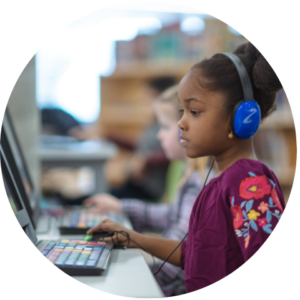A student’s need for Assistive Technology is based on a case-by-case decision made by the Individualized Education Program (IEP) team. If your student is on an Individualized Education Program (IEP), then the IEP team MUST consider if assistive technology would benefit your student regardless of the student’s specific disability. Each IEP document has a designated section that MUST be marked as to whether or not the student has a need for AT. The following reference guide was put together by the Utah Assistive Technology Teams (UATT) Leadership Council to guide IEP teams (including parents) during the AT consideration portion on a student’s IEP.
Consider these six areas when thinking about your student’s AT needs:
- Academics: Reading, Written Expression, Math, Executive Functions, Learning/Study
Sensory: Hearing, Vision, Tactile/Movement
Communication: Expressive, Receptive, Functional
Physical Access: Environmental Control, Positioning, Mobility, Seating
Behavior: Inattentiveness, Aggression, Frustration
Computer Access
Assistive technology services include:
Evaluating whether or not the student would benefit from AT
Providing the assistive technology device
Training the student in using the device
Training the parents and professionals who work with the child, if needed
Evaluation Process:
If your student has not been evaluated for assistive technology and you believe that your student would benefit from this service, contact your child’s IEP team to start the evaluation process. If your child has completed the AT evaluation and has been found eligible, the following should be considered:
What tools (devices/services) are necessary to support the student’s needs and goals across all educational environments (playground, classroom, library)
Issues related to design and selection of the device, as well as maintenance, repair, and replacement of devices
Training (to use the device) and ongoing technical assistance are necessary not only for the student, but also for family members, teachers, service providers, and other people who are significantly involved in a student’s life.



